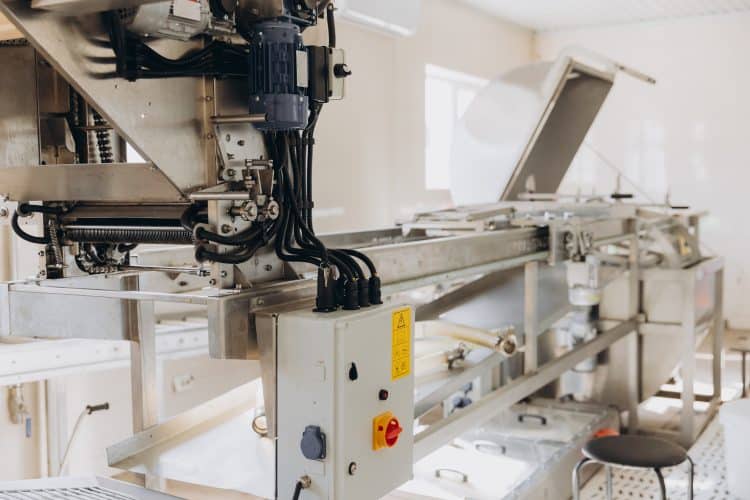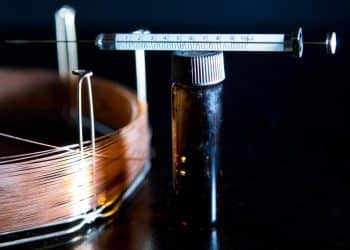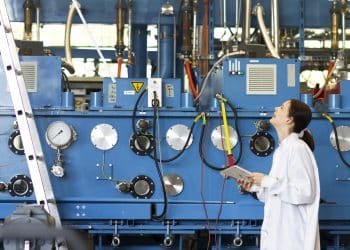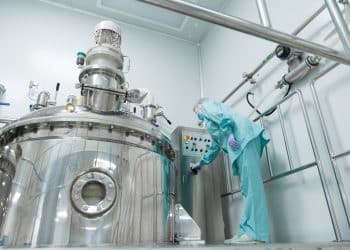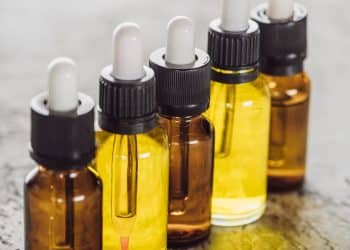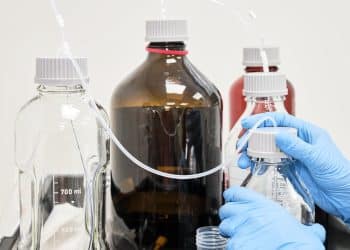It is impossible to find a production process of cosmetics, pharmaceuticals, food, or biofuels that doesn’t include an extraction step. It is difficult to locate the beginning of botanical extraction in human history since humans (and many other animals) have always used phytochemicals’ powers for medical, nutraceutical, and spiritual applications.
Excavations in Iraq unearthed specific pots from 3500 BC that strongly resemble a Soxhlet apparatus. Pharaonic civilization probably was the first to use solid-liquid extraction to obtain colors, aromas and materials. Botanical extractions took a radically new turn with the first distillation of ethanol by Avicenna (930-1037), who was the inventor of the alembic.
However, the official history completely overshadows the key role of women in the transmission of botanical knowledge. Indeed, in all Mediterranean countries, the tradition of preparing extracts passed down from mother to daughter, keeping secrets of bewitching perfumes or ancestral remedies. Furthermore, the chemist from Alexandria called “Mary the Jewess”, gave her name to the famous “Mary’s bath” and documents show that her extraction technique in 100 BC was advanced with the use of solar energy. [1],[2]
Traditional techniques to extract phytochemicals involve high solvent consumption, long processing time, and sometimes thermal degradation. Furthermore, the seek for innovative methods has become more urgent to satisfy the need for more sustainable approaches to industrial production. Among the latest extraction methods,
Pulsed Electric Field (PEF) extraction has gained attention due to its low thermal-degradation effects on samples. Indeed, PEF was first studied for its high potential in the food industry and owes its success to its application to the preservation of food. However, now PEF technology is widely used as a pre-treatment in the extraction of nutraceuticals and phytochemicals from plants. Indeed, its mechanism of action based on electroporation, enhances tissue permeability, facilitating compound extraction while avoiding thermal degradation. [3]
Understanding PEF Mechanism
Pulsed electric field technique is based on a series of short, high-intensity, electric pulses applied to a sample. The apparatus consists of a pulse generator, the treatment chamber, electrodes correctly designed to avoid the effect of electrolysis, and a system for control and data acquisition. The sample is located between the electrodes inside the treatment chamber. A capacitor retains the energy from the power source and is then discharged through the treatment chamber to induce an electric field on the sample.
Generally, a cooling system is also incorporated into the machine since, depending on the intensity of the electric field, the sample might suffer from a considerable temperature increase. [4] PEF can be used both in batch mode followed by a solid-liquid extraction apparatus and in continuous flow mode, which is generally preferred in industrial applications due to the low capacity of the batch mode. [2]
The principle of this method is electroporation, i.e. cell membrane permeability enhancement due to external electrical forces. The application of an electric field causes charge modification of dipolar molecules that constitute cell membranes and the creation of hydrophilic pores, which strongly affects mass transfer from inside to outside the cell. [5] The electroporation can be reversible or irreversible depending on how much the electric field intensity exceeds a critical threshold value above which the rupture of the cell takes place. However, this effect might be desired depending on the application. Indeed, cell disrupture often increases mass transfer. [2]
As already mentioned, another important parameter is temperature. Even though PEF is a non-thermal treatment that is carried out around ambient temperature, the application of strong electric field can cause significant heat release by the sample, which in the case of botanical extraction might be a strong disadvantage due to the high-temperature degradation potential of many natural organic compounds. [4] Indeed, stronger electric fields (generally above 20 kV/cm) are used in food treatment applications, but for botanical extraction, the usual range is 0.1 – 20 kV/cm. [2],[4]
The efficiency of PEF-assisted extraction not only depends on the technique’s parameters and solvent characteristics but also on the nature of the sample, the tissue and cell type and the conductivity of the matrix. For example, extracting bioactive compounds from tough materials such as seeds requires intensities of 10-20 kV/cm, whereas an intensity of 0.1-10 kV/cm is enough for the pericarp and mesocarp of a few fruits. [2]
Even though PEF technology is environmentally friendly and the flexibility to optimize process factors makes it adaptable to several applications, its main drawback is its low acceptability. Indeed, compared to other extraction techniques such as MAE and SFE that are widely used, PEF remains somehow a niche extraction technique and the literature on this technique is not as abundant as the others. Furthermore, analyzing the patents on this methodology, it is clear that a limited amount of solvents is currently being used under PEF, thus leading to lower acceptability. [3]
Which Phytochemicals are More Compatible with PEF Extraction?
Plant extract use for therapeutic aims has been present almost in every human society since ancient times. Traditional extraction techniques are decoction, maceration, infusion, digestion, and percolation. With modernization and industrial growth era, Soxhlet extraction was introduced, which is an advanced form of digestion and decoction methods.
However, these traditional methods have several drawbacks and among them, the most significant are:
- long extraction times,
- large volumes of solvent,
- low yields.
To meet these challenges, new “Green Techniques” have been introduced. Among them:
- microwave-assisted extraction (MAE),
- supercritical fluid extraction (SFE),
- pressurized liquid extraction (PLE),
- ultrasonic-assisted extraction (UAE),
- pulsed field-assisted extraction (PEF),
- and enzyme-assisted extraction (EAE).
PEF was first used in 1940 to increase the extraction of juice from fruits, which remains one of PEF’s most frequent applications. The first patent on PEF extraction from plant materials is from 2009 and covers a great range of phytochemicals, focusing on carotenoids in particular. [3] The main classes of phytochemicals are listed below, focusing on how PEF has been applied to each of them.
Alkaloids are a wide group of natural organic compounds that present at least one nitrogen atom. They are generally basic but can also be neutral or slightly acidic. Alkaloids were traditionally extracted with non-polar organic solvents under basic conditions or with polar organic solvents under acidic conditions. However, their high potential in several pharmaceutical applications imposes the need for continuous research and new extraction and purification techniques. Alkaloids are now generally extracted with MAE and SFE with polar solvents, but good yields have also been obtained with PEF and UAE. [3] In particular, steroidal alkaloids from potato peels have been obtained using PEF with a yield of 99.9% using a pulse intensity of 0.75 kV/cm. [6]
Polyphenols’s commercial demand is increasing due to their many biological activities. In particular, their success is due to their antioxidant power. However, this class of compounds is very sensitive to temperature variations and risks temperature-induced degradation. Traditionally, polyphenols have been extracted using organic co-solvents, which is a significant obstacle to their application in pharmaceutical and nutraceutical industries. Among the more innovative techniques, SFE has been widely used to extract this class of compound, but this technique still involves the use of organic solvents. On the other hand, MAE causes thermal degradation of polyphenols, drastically reducing extraction yields. PEF has been used as a pre-treatment in polyphenols extraction, increasing extraction yields up to 192% with a pulse intensity of 7 kV/cm and using water as a solvent, thus avoiding the organic solvents’ toxicity. [2], [7]
Anthocyanins are polyphenol derivatives. They are responsible for the blue, red, purple and orange color of many fruits and vegetables and are particularly present in berries. They are very strong antioxidants and are used in the treatment of several chronic diseases. [8]Unlike other natural organic substances, anthocyanins are water-soluble and this characteristic makes them suitable as natural dyes.Furthermore, they are quite stable against heat, since they undergo thermal degradation above 100 °C and they are sensitive to pH variations, that change their structure and absorption spectrum, varying their color from red to blue. [5]
Some papers report increasing extraction yields using PEF technology, but the values are not as significant as other classes of compounds. [6] In particular, electroporation promotes a freer movement of intracellular liquid which also contains anthocyanins. However, anthocyanins obtained by PEF-assisted extraction are in their non-acylated form, which is purple and less stable, thus they tend to degrade more quickly.[5]
Polysaccharides are long-chain polycarbohydrates generally found in plants’ fruits and roots. They are used in the nutraceutical industry but in the last few years, they have gained attention as a potential source of biofuels. They can be extracted from agricultural wastes or seaweed. Traditionally, polysaccharides were extracted through hydrolysis and maceration.
However, in addition to the ones already mentioned, these methods suffer from impurities in the extract and degradation of unstable molecules. In particular, long extraction times might cause de-polymerization and de-esterification. Among the more innovative techniques, MAE offers a reduction in the solvent volume required. However, PEF is the most efficient way to extract inulin and authors have found the energy consumption to be drastically reduced due to lower extraction temperatures, resulting in net savings. [3]
Carotenoids are oil-soluble compounds whose beneficial effects on the immune system, age-related diseases, and cancer have been widely proven. However, their position in the plant cell makes these compounds’ absorption more difficult. Traditionally, carotenoid extraction has been realized with organic solvents but the need for greener methods imposes the seek for alternative solutions.[9]
PEF resulted to be one of the most efficient methods to extract these compounds, reaching extraction yields increased up to 83%. Interestingly, there is a difference in individual carotenoids content that indicates the effect of PEF on adjusting their bio-synthesis either leading to decomposition. Some authors have used an oil-in-water microemulsion in combination with PEF that avoids the use of organic solvents. [3], [5], [9]
Finally, other natural dyes such as Chlorophylls from microalgae and Betanins from red beet were extracted using PEF assisted extraction with increased yields.[5]
PEF and Food Industry
The extraction of value-added products by using PEF technology is particularly interesting when considering wastes as a possible source of biomass. Indeed, apart from agro-industrial wastes, the increasing demand for processed food due to modern lifestyle eventually leads to large quantities of waste generated during food processing. Furthermore, waste recovery is often energy-consuming and expensive for producers.
PEF has demonstrated to be an efficient extraction technique with a high selectivity for certain bio-compounds. It is now widely proved that wastes such as seeds, peels, and stems contain high amounts of value-added compounds but their physical characteristics make them less appealing to industry due to the higher amount of energy required for their treatment compared to other parts of the plant. Thus, PEF can offer additional profits and encourage growers to decrease waste and associated environmental pollution. [10],[2]
PEF has been used to recover value-added products from fruit and vegetables, in particular, the grape processing industry produces a significant number of wastes that are a source of polyphenols. From the cooking oil industry can be recovered chlorophylls, polyphenols and proteins, almost 60% of the amount of polysaccharides necessary to produce biofuels depends on sugar industry crops. Another interesting example is eggshells, which are rich in calcium that has been obtained with PEF-assisted extraction to produce calcium-rich food sources. [10]
Finally, the largest use of PEF in the food industry relies on its high potential in food processing. Indeed, PEF-induced electroporation of microorganisms was first used to pasteurize milk and is now widely used to sterilize and preserve different kinds of food. Furthermore, PEF treatment reduces the amount of 5-Hydroxy Methyl Furfural (HMF) that is used as a quality loss indicator in food due to its carcinogenic properties. PEF can also be used for non-thermal cooking which is a technique that preserves the nutritional value of a product. [6]
PEF is a technique that is already widely used in food processing but has shown high potential also in botanical extraction. However, in this field, other techniques have shown comparable potential and their use is well-established and accepted. Nevertheless, the savings derived from the use of a non-thermal technique such as PEF and the higher preservation of unstable compounds such as carotenoids might be very interesting due to the high market demand for such biomolecules. [3], [6]
Bibliography:
[1] F. Chemat et al., “A review of sustainable and intensified techniques for extraction of food and natural products”, 2020, Royal Society of Chemistry. doi: 10.1039/c9gc03878g.
[2] M. M. A. N. Ranjha et al., “A Critical Review on Pulsed Electric Field: A Novel Technology for the Extraction of Phytoconstituents”, Molecules, 2021, 26(16). doi: 10.3390/MOLECULES26164893.
[3] T. Belwal et al., “A critical analysis of extraction techniques used for botanicals: Trends, priorities, industrial uses and optimization strategies”, TrAC Trends in Analytical Chemistry, 2018, 100, pp. 82–102. doi: 10.1016/J.TRAC.2017.12.018.
[4] B. Gómez et al., “Application of pulsed electric fields in meat and fish processing industries: An overview,” Food Research International, 2019, 123, pp. 95–105. doi: 10.1016/J.FOODRES.2019.04.047.
[5] I. Karimi Sani et al., “Pulsed electric field-assisted extraction of natural colorants; principles and applications”, Food Biosci, 2024, 61. doi: 10.1016/J.FBIO.2024.104746.
[6] R. N. Arshad et al., “Pulsed electric field: A potential alternative towards a sustainable food processing”, Trends Food Sci Technol, 2021, 111, pp. 43–54. doi: 10.1016/J.TIFS.2021.02.041.
[7] E. Luengo, I. Álvarez, and J. Raso, “Improving the pressing extraction of polyphenols of orange peel by pulsed electric fields”, Innovative Food Science & Emerging Technologies, vol. 17, pp. 79–84, Jan. 2013, doi: 10.1016/J.IFSET.2012.10.005.
[8] D. Peña-Sanhueza, C. Inostroza-Blancheteau, A. Ribera-Fonseca, and M. Reyes-Díaz, “Anthocyanins in Berries and Their Potential Use in Human Health”, in Superfood and Functional Food – The Development of Superfoods and Their Roles as Medicine, 2017. doi: 10.5772/67104.
[9] S. Roohinejad, I. Oey, D. W. Everett, and B. E. Niven, “Evaluating the Effectiveness of β-Carotene Extraction from Pulsed Electric Field-Treated Carrot Pomace Using Oil-in-Water Microemulsion,” Food Bioproc Tech, 2014, 7(11), pp. 3336–3348. doi: 10.1007/S11947-014-1334-6/FIGURES/3.
[10] R. N. Arshad et al., “Effective valorization of food wastes and by-products through pulsed electric field: A systematic review,” J Food Process Eng, 2021, 44(3). doi: 10.1111/JFPE.13629.
